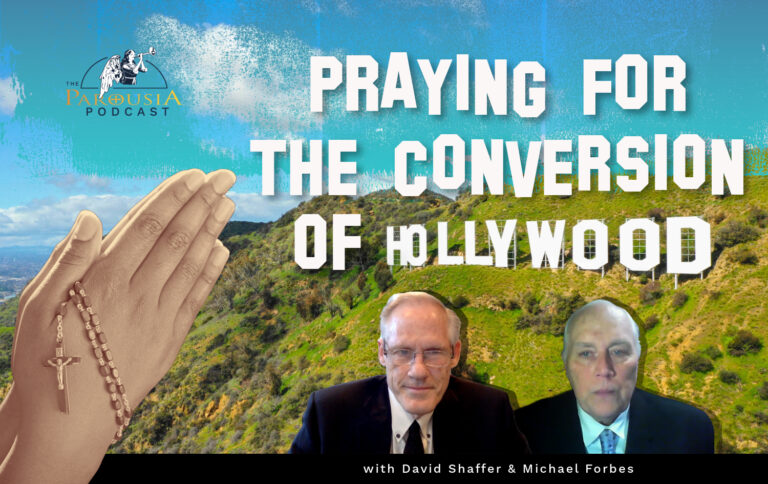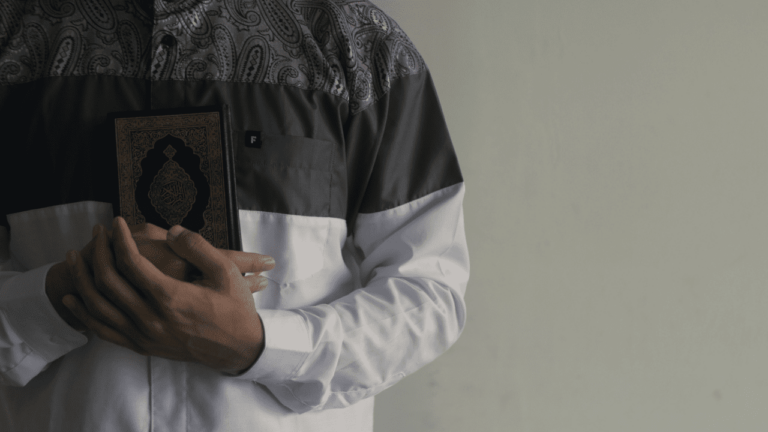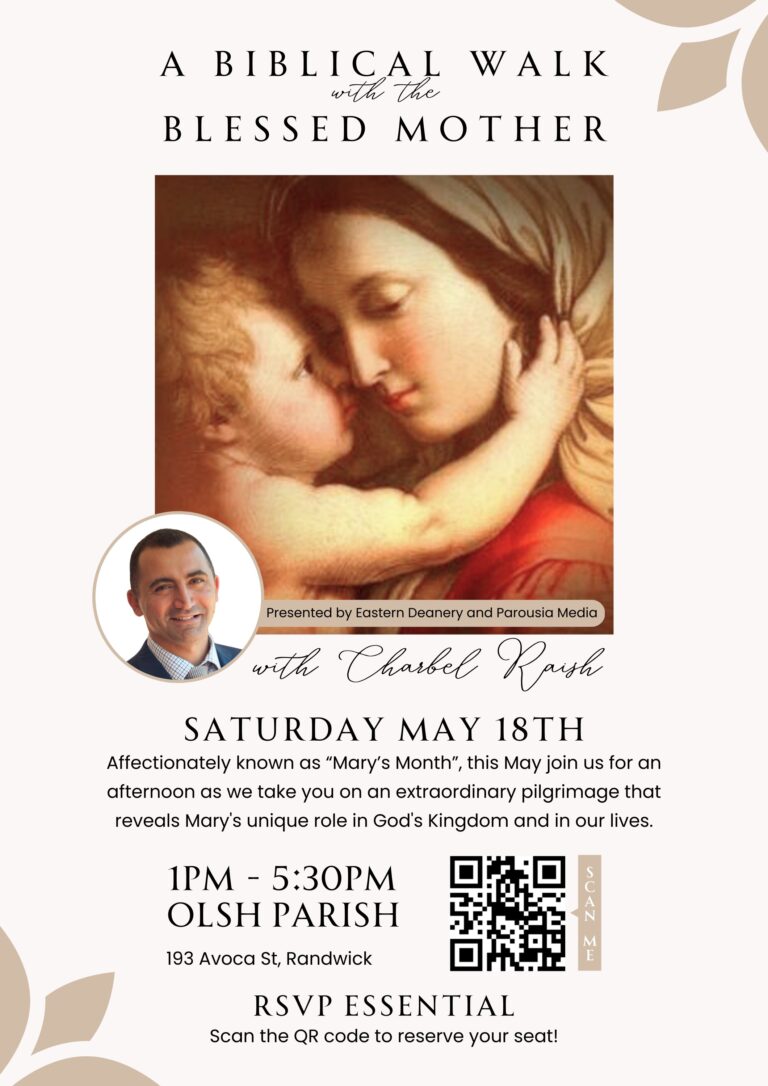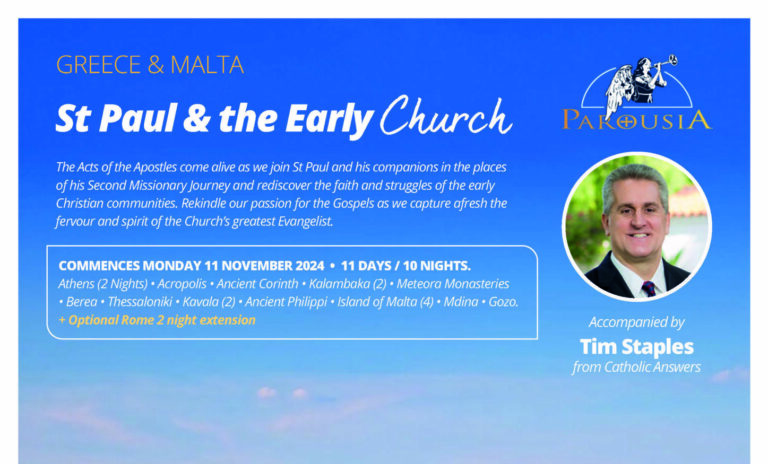This article first appeared at: catholic.com
Imagine going to confession on a Saturday afternoon only to find no priest available. You drive to nearby—or even distant—churches and encounter only frustrated parishioners facing the same situation. A couple with a new baby cannot find a priest to baptize him. The last time anyone in the group attended Mass was months ago. This nightmare gives some sense of the profound evil that gripped Mexico nearly a century ago.
Socialist historians from Mexico and Russia have argued that the Cristeros were superstitious peasants manipulated by elites who felt threatened by the revolution’s promise of progress and justice. To make such arguments they had to ignore the facts of the story (the wealthy of Mexico, including practicing Catholics, opposed the uprising), as well as the eleven centuries of Catholic militancy that informed it. Seduced by Marxist errors and Masonic superstitions, revolutionaries declared war on the Catholic Church. They seized control of the government and, in 1917, wrote a socialist constitution packed with anticlerical articles with the goal of marginalizing the Church’s influence—if not driving her from Mexico altogether.
Backed by the full force of federal law, the Revolutionary Government confiscated all Church property, including hospitals, monasteries, convents, and schools. Priests were forbidden to wear clerics in public. They were not allowed to express opinions on politics, even in private conversation. They could not seek justice in the Mexican courts. To take a religious vow became a criminal act. All foreign clergy were deported.
In 1926, the president of Mexico, Plutarco Elias Calles, added teeth to the persecution with additions to the penal code. The “Calles Law,” as it came to be known, called for uniform enforcement throughout the country of the Constitution’s anticlerical articles. It threatened severe sanctions for violations and for government officials who failed to enforce them. “As long as I am President of the Republic, the Constitution of 1917 will be obeyed,” he vowed, saying he would not be moved by the “wailing of sacristans or the pujidos (groans) of the over-pious” (David C. Bailey, ¡Viva Cristo Rey!: The Cristero Rebellion, and the Church-State Conflict in Mexico, 65).
Self-Proclaimed Enemies of God
Calles was, in one sense, just another anticlerical revolutionary in a century-old series of anticlerical revolutionaries. For him the Church represented a past he wished to see liquidated.
Unable to operate under these conditions, the Mexican bishops, after agonized deliberations and consultation with the Holy See, suspended public worship on July 31, 1926. Three bishops went into hiding; the rest left the country in exile. The next day, for the first time in more than four hundred years, no priest in Mexico ascended ad altare Dei to offer the holy sacrifice of the Mass.
Priests who remained in Mexico faced two choices: cooperation with the government or a life on the run. Those who cooperated were forced to abandon their parishes, to move to urban areas, and to register with their state governments—which now had the power to set clerical quotas. In the state of Tobasco, for example, Governor Tomás Canabal restricted the number of priests in his state to six, one for every thirty thousand citizens. He demanded these six take wives. In true Marxist fashion, he renamed his capital city, San Juan Bautista (St. John the Baptist), to Villa Hermosa (beautiful villa), and named his children Lenin, Lucifer, and Satan. His business card identified him as “The Personal Enemy of God.”
A courageous minority of priests refused to register. They went into hiding and roamed Mexico by night and in disguise, doing their best to bring the sacraments to the faithful. If caught, they were arrested, fined, jailed, and sometimes tortured and executed.
Following the suspension of public worship, the National League for the Defense of Religious Liberty, an organization formed by middle-class Catholic intellectuals, circulated a petition signed by two million Mexicans demanding constitutional reform. Their cries were ignored; the government went so far as to deny the petition existed. The people responded with a nationwide boycott of government transportation services, energy, and entertainment. The boycott failed because Mexico’s wealthy—including many practicing Catholics—felt the sting of the boycott and complained to the government. Federal police were sent in to break up picket lines. By January 1927, many of the faithful concluded that they had exhausted all peaceful means of protest. The Mexican landowning peasant class in the rural west took up arms.
Bishops: Fight or Flight?
Was this the effect that the bishops had desired? In the case of a few, perhaps, yes. Bishop Leopoldo Lara y Torres of Tacambaro wrote to Calles telling him that the bishops were prepared to seal their protest “in blood.” The fiery tactics of Bishop Francisco Orozco y Jiménez of Guadalajara made Rome nervous; he endured three exiles for his public opposition to the government. Bishop José de Jesús Manríquez y Zárate of Huejulta had been arrested once already for circulating tracts condemning Calles and for using his pulpit to denounce his administration. Bishop Zárate would later help supply the Cristeros, and he even considered taking the field with them. For most of the bishops, however, suspension of public worship was a non-violent protest designed to bring popular pressure on the government.
The non-violent view was shared by Jose Anacleto Gonzáles Flores, the heroic scholar and founder of the Catholic-action organization the Unión Popular. As street demonstrations devolved into street violence, however, Flores reluctantly joined forces with the National League’s René Capistrán Garza in a nationwide call to arms. Flores told his followers that they were headed for Calvary.
If one of you should ask me what sacrifice I am asking of you in order to seal the pact we are going to celebrate, I will tell you in two words: your blood. If you want to proceed, stop dreaming of places of honor, military triumphs, braid, luster, victories, and authority over others. Mexico needs a tradition of blood in order to cement its free life of tomorrow. For that work my life is available, and for that tradition I ask yours. (Bailey, ¡Viva Cristo Rey! , 110)
Flores was martyred after an ordeal of brutal torture during which he was hung by his thumbs while federal soldiers skinned the soles of his feet. Before he died, he accomplished much more than organizing a military uprising. He and the leaders of the Unión Popular operated catechesis programs for children and adults and relief efforts for the poor. Flores understood that a military victory would be hollow if there were no Catholic Mexico to replace Revolutionary Mexico. He was beatified in 1999 by Pope John Paul II.
No Support from Northern Neighbors
When the Cristeros took up arms in January 1927, they had very few arms to take up, only their battle cry, “¡ Viva Cristo Rey!” The uprising occurred almost simultaneously in small towns and villages in a dozen western states including Zacatecas, Jalisco, Guanajuato, Durango, Michoacán, and Colima. Hundreds of small, poorly organized bands of sharecroppers and rancheros bearing machetes and a few rifles took over local municipalities by disarming the garrisons at federal outposts, as well as local police and militia units.
Lack of a long-term plan, however, took some of the steam out of these initial victories. Capistrán Garza had been a great one for creating pious fervor, but he was not the man to organize an armed rebellion. His job, as he saw it, was to cross the border and stir up sympathy for the Cristero cause among U.S. Catholics, sympathy that would translate into large gifts of cash with which to buy desperately needed ammunition. Garza knew that American support would dictate the outcome of the war, but the U.S. bishops were reluctant to give any sign of supporting an armed rebellion against a government recognized by the United States. Meanwhile, most of the Mexican bishops were looking for a negotiated settlement. Garza’s northern sojourn yielded almost no fruit.
Knowing nothing of the diplomatic bargaining that their uprising had generated, the Cristeros pressed ahead with their war for the soul of Mexico. In some regions they were clearly winning; in others, at least they were holding their own. Taking over one rural village at a time, they began not only better to organize their army, but also to organize alternate governments in the territories they had liberated. They controlled a wide swath of towns and cities in the state of Zacatecas. The region of Coalcomán in western Michoacán sent Calles formal notification of its succession from Mexico.
Municipal governments under Cristero control collected taxes for the war effort but also discharged the ordinary functions of civil government, such as school administration. Deeply conscious of the Christian nature of their movement, Cristero lawmakers took a hard line on moral behavior. Unmarried couples were required to marry or separate. Prostitution, gambling, and public drunkenness were severely punished, and rape could draw a sentence of death. Catholic social justice informed Cristero economic policy, which forbade speculation in corn and other crops afflicted by shortages resulting from the war.
Women Wage War of Secrecy
The war raged for thirty months. The federal government attempted to deny Cristero victories, but in fact—and in spite of severe shortages of ammunition—Catholic soldiers defeated federal units in operations ranging from large cavalry engagements on the plains of Jalisco to guerilla operations in the mountains of Durango. The American military attaché described the “remarkable tenacity” of the Cristeros and the general disorder of the federal army.
The Cristeros lived by a strict moral code, one that stood in strict contrast to the behavior of federal troops, who were frequently drunk or stoned and who terrorized the civilian population with pillage and rape. Consequently, public sympathy for the Cristeros was strong. For example, there was an extensive logistics network run by the Feminine Brigades of St. Joan of Arc, a Catholic women’s organization affiliated with the Unión Popular. These women devised creative and clandestine ways to keep soldiers supplied: special vests for smuggling ammunition out of federal factories and secret workshops for the production of homemade explosives, such as grenades made out of jelly tins. These courageous twenty-five thousand ladies also carried messages—written on silk and hidden within the soles of shoes—between units. All of their activities were carried out under an oath of secrecy. No evidence indicates that the oath was ever broken.
The heroic efforts of the Joan of Arc Brigades notwithstanding, the Cristero army never had enough ammunition to win a decisive victory. Too often, in the heat of battle, they had to disengage so as to live to fight another day. On several occasions they were reduced to rolling boulders (called “Hail Marys” and “Our Fathers”) down a hill on advancing federal troops. Although the federal army was badly led and plagued by high rates of desertion, they were never short of arms and ammunition—supplied by the U.S. government. In at least one battle, American pilots provided air support for the federal army. Stalemate, albeit one that could last for years, seemed to be the best for which the Cristeros could hope.
“Animated by a Spirit of Good Will”
Plutarco Calles felt threatened nonetheless. The war was costing the government ninety-six million pesos a year, more than a third of its annual budget. This figure did not include the harm to his economy in reduced agricultural production (for which Calles’ scorched-earth policy was to blame). Worse perhaps, his policy of relocating some 30 percent of the rural population of Mexico to urban areas in an effort to eliminate the Cristero support network was only provoking widespread resentment. Half a million Mexicans left the country, forming California’s first wave of Mexican immigration. By the end of the fighting, military deaths approached one hundred thousand, 60 percent of which were federal troops.
Although Calles continued to call the shots, he turned over the presidency to his hand-picked successor, Emilio Portes Gil. Whether it was Portes Gil’s more moderate positions on religious questions or Calles’ growing fear that the Cristeros would never be defeated (“they are annihilating us,” he told Gil), the Mexican government at last came to the bargaining table.
The man who negotiated the settlement was the U.S. ambassador to Mexico, Dwight Morrow (whose daughter Anne married Charles Lindbergh). Calles and Portes Gil knew that if the Mexican bishops restored public worship, the armed resistance would fade. Pope Pius XI would permit the restoration of public worship only if he believed that the persecution of the Church would abate and that Church property would be restored. Calles and Portes Gil had no plans to change the constitution, but they were willing to hint that enforcement could be relaxed.
On June 21, 1929, Mexico City’s Archbishop Pascual Díaz and Archbishop Ruiz y Flores, the Apostolic Delegate, along with Portes Gil, issued statements to the press. The Mexican episcopal statement was brief, citing the spirit of good will in which negotiations had taken place and a desire that the restoration of public worship would “lead the Mexican people, animated by a spirit of good will, to cooperate in all moral efforts undertaken for the welfare of all the people of the country” (Bailey, ¡Viva Cristo Rey! , 312).
Portes Gil assured the people of Mexico that the Constitution did not intend “to destroy the identity of the Catholic Church” nor “to intervene in any way with its spiritual functions” and that he was prepared to listen to “any complaints . . . regarding injustices . . . committed by undue application of the laws” (Bailey, ¡Viva Cristo Rey! , 312). He clarified that the registration of clergy did not mean that the government could register clergy not appointed by ecclesiastical authority. He added that religious instruction could take place within the confines of a church, but not in schools, and that any law of Mexico was subject to appeal by one of her citizens.
On these two noncommittal statements, los arreglos (agreements) were brokered. Ruiz y Flores and Díaz had given the most generous interpretation possible to Pius XI’s demand that Church property be restored: “In so far as could reasonably be expected,” they told Morrow. Portes Gil told them that Church property not being used by the government would be returned immediately, but that the Church could give the government time to vacate buildings currently occupied. Gil also ordered a total amnesty for all Cristeros, including free rail passes to return to their homes. Officers were permitted to keep their sidearms and horses.
At the conclusion of the meeting, the two bishops drove directly to the Basilica of Our Lady of Guadalupe and knelt at the high altar in thanksgiving. Public worship was restored. The faithful packed the churches. Word came from Pius XI to the Cristeros asking them to lay down their arms. Over the next three months, in obedience to the Holy Father, some more reluctantly than others, that is exactly what they did.
Betrayal, Persecution, and Mass Executions
But within a few months of the arreglos, signs emerged that all was not well. A significant number of churches, schools, and rectories remained in government hands. Ruiz y Flores and Díaz attempted to meet with the president but were ignored. When they at last met with Portes Gil’s successor, Pascual Ortiz Rubio (also hand-picked by Calles) and asked him to honor his predecessor’s promises, they were told that Portes Gil had promised nothing.
Meanwhile, the Cristeros who were not willing to move out of their states were taken prisoner and executed. The “annihilation of Catholic militants after the 1929 agreement” (Bailey, ¡Viva Cristo Rey! , 294) lasted for several years. There were mass executions in Jalisco, and reports of Cristero veterans being hunted down and killed lasted until the 1950s. It is not known how many thousands of them lost their lives after the war had been declared over.
The worst years for the Church in Mexico were 1934 and 1935. In this period Graham Greene set his novel The Power and the Glory, in which a “whiskey priest” fights persecution and his own weaknesses.
Most state governments closed the churches. Priests practically vanished, as they were again on the run. Less than a tenth of those who had served the faithful in 1925 were permitted to operate a decade later. In truth, the number was fewer, since those who wanted to practice legally had to marry. In 1934 there were 334 registered priests for fifteen million Mexicans.
Schoolteachers in Yucatán and Michoacán were required to take a public oath of atheism and to promise to teach against the Catholic religion. Archbishop Díaz’s episcopal palace was never returned. He was thrown in jail for a time and then forced to rent rooms where he could find them. Fearing to lose their property, few were willing to rent to the aged priest. He died hated by the Mexican government and not altogether loved by Catholic militants who felt he had betrayed their cause.
Doubtless it was Díaz’s voice that at last convinced Pius XI to call for an end to the Cristero uprising. However, we can render no just judgment on the members of the hierarchy who sought an end to the Cristiada without bearing in mind that the Church is not a political movement. It is an institution for the care of souls. We may wish ever to see the Church triumph over her enemies, but her path must be the path of her founder, a steady march to Calvary. Pius XI and his bishops needed first and foremost to restore the sacraments to the Mexican faithful, even if the circumstances under which they were to be dispensed were trying. They negotiated in good faith, which is more than can be said for anyone else at the bargaining table.
The Seed of the Church
The Mexican Church’s climb out of the hell of the Revolution has been slow, and it is not finished. Mexican schoolchildren, to the extent that they even hear the story of the Cristeros, are as likely as not to get the socialist spin. Well into the 1970s, Catholic schools received regular inspections to ensure use of government textbooks. Religion could not be taught—only “values.” Not until the 1980s were the anticlerical articles repealed. Not until the late 1990s, with the beatifications and canonizations of the Martyrs of the Mexican Revolution by John Paul II and, in 2005, Benedict XVI, did a sympathetic public awareness of the Cristeros resurface.
Nonetheless, the Calles Law may be off the books, but anticlerical sentiment remains, especially in the popular media, which fumed about “opening old wounds” when last summer Miss Mexico wore a dress honoring the Cristeros. When bishops in Mexico spoke against new laws permitting abortion, the press behaved as if they had no business commenting on a “political” matter.
“The blood of the martyrs is the seed of the Church.” After Tertullian wrote those words a century would pass before the Edict of Milan. How and when God will perfect the sacrifices of the Mexican Martyrs is up to him. For our part we can contemplate the ferocity with which the Church was persecuted not long ago in our own backyard, and the zeal of the faithful who defended her with Catholic hearts forged in centuries of fighting the enemies of Jesus Christ.
SIDEBARS
Mexico’s Tarcisius: José Sánchez del Río
![]() In 1913, in the state of Michoacán, a boy was born to Macario and Maria Sánchez del Río. They called him José. Macario and Maria were cattle ranchers who loved Jesus Christ with all their hearts and who reared their four children, of whom José was the third, to do the same. José cultivated a strong devotion to the Blessed Virgin of Guadalupe and said his rosary each day with great care. He instructed the other young children of his town in the Catholic faith, and encouraged them to make holy hours before the Blessed Sacrament. José loved to play marbles with his companions, and he learned to ride and care for horses. When José was thirteen, his older brothers, Macario and Miguel, left home to join the Cristeros. José desired to join them, but his mother forbade it. For a year he begged her to let him go. “Mother,” he said, “Will you deny me the chance to go to heaven, and so soon?”
In 1913, in the state of Michoacán, a boy was born to Macario and Maria Sánchez del Río. They called him José. Macario and Maria were cattle ranchers who loved Jesus Christ with all their hearts and who reared their four children, of whom José was the third, to do the same. José cultivated a strong devotion to the Blessed Virgin of Guadalupe and said his rosary each day with great care. He instructed the other young children of his town in the Catholic faith, and encouraged them to make holy hours before the Blessed Sacrament. José loved to play marbles with his companions, and he learned to ride and care for horses. When José was thirteen, his older brothers, Macario and Miguel, left home to join the Cristeros. José desired to join them, but his mother forbade it. For a year he begged her to let him go. “Mother,” he said, “Will you deny me the chance to go to heaven, and so soon?”
At last his mother relented, and with tears in her eyes watched her youngest son ride off to join the crusade. The Cristero commander in José’s town refused the boy’s appeal to enlist, so he made his way some twenty or thirty miles to the next town, Cotija, where he presented himself to the Cristero commander, Prudencio Mendoza.
“What contribution can so small a boy make to our army?”
“I ride well. I know how to tend horses, clean weapons and spurs, and how to fry beans and tortillas.”
Mendoza was inspired by the boy’s grit, so he made him the aide of the Cristero General Rubén Guízar Morfin. Impressed by José’s service, Morfin promoted him to bugler. His job was to ride alongside the general in combat, carrying his battle standard and delivering the general’s orders with his horn. The soldiers of José’s regiment, inspired by his piety and fervor, nicknamed him Tarcisius after the Roman altar boy who died protecting the Blessed Sacrament from a pagan mob.
On February 6, 1928, the Cristero army was overwhelmed by the federal army in fierce and bloody combat outside of Cotija. General Morfin’s horse was shot, and it looked as if he would soon be captured by the federal troops. José leapt off of his horse.
“General!” he shouted. “Take my mount and escape to safety. You are of far greater importance to the Cristero cause than I am.”
Helping Morfin up into the saddle, José delivered a hard swat across the backside of the horse and sent it galloping away. He then took his rifle and bandolier and, taking cover behind a rock, began shooting the federal soldiers closing around him. At last the boy ran out of ammunition, and standing up shouted to the enemy, “I have not surrendered. I have only stopped shooting you because I am out of cartridges.”
When the federal soldiers saw that they had been fired upon by a boy, they seized him in a fury. They put José in irons and dragged him off to the local church, which they had converted into a jail, a stable for their horses, and a coop for roosters they used in cockfights. These they had leashed to the church’s monstrance. Jose scolded the soldiers for desecrating a holy place.
“Now we will see, hombrecito, how tough you are!” they sneered.
To test his resolve, they forced José to watch as they took another captured Cristero, tortured him, and hanged him from a telegraph pole. Instead of looking away, José encouraged the prisoner, telling him that they would soon meet up in heaven. For two days, José was locked in the sacristy of the church, during which time he wrote to his mother, telling her that he had no fear, that he had welcomed the will of God and looked forward to dying in the light of our Lord.
The captain of the guard offered José his freedom in exchange for information about the Cristeros, including the names of the people who were supplying them. José refused, so they pinned him down and cut the skin off the soles of his feet. At eleven at night, they marched José to the cemetery on the edge of town, all the while telling him that if he would deny Jesus Christ they would spare his life.
“¡ Viva Cristo Rey!” shouted José, the rallying cry of the Cristeros. “¡ Viva Cristo Rey!” over and over as he limped in his bloodied feet over the gravel and twigs. “Long Live Christ the King! Long Live the Virgin of Guadalupe!” At the graveyard, José was pushed into a shallow grave. Struggling to his feet he again shouted, “¡ Viva Cristo Rey!” To avoid the sound of gunfire, the commander of the firing squad ordered his men to stab the boy with their bayonets. “¡ Viva Cristo Rey!” Again the bayonet into his side. “¡ Viva Santa Maria de Guadalupe!”
“Say ‘Death to Christ the King’ and save your life!” demanded the captain of the guard.
“¡ Viva Cristo Rey!”
The captain lost all patience and drew his own pistol. The first bullet struck José in the head, knocking him to the ground. As blood pooled next to his face, José, in a final act of defiance against the enemies of Jesus Christ who had taken over his country, dipped his hand in his blood and with it drew a cross in the dirt, then touched his lips to the cross. Six more bullets at point-blank range sent the martyr into the arms of his Savior.
Torture and Death
While Cristeros often spared the lives of captured federal soldiers, the reverse was not true. Cristeros who were captured in battle were executed after undergoing torture designed to force the Catholic soldiers to reveal military secrets and to deny the faith. Electric shock, burning with blow torches, hanging by thumbs, and broken bones were common. It was also common to drag prisoners behind a horse and then quarter them alive. A widespread form of torture was to flay the soles of the feet and force the victim to walk on rock salt. Nonetheless, many Cristero prisoners died bravely, and the accounts of their deaths inspired their brothers-in-arms.
Priests captured by the Mexican government, whether they were actively serving with the Cristeros or had simply refused to register with the government, were hanged or shot. Among them was the sixty-two year old Fr. Mateo Correa Magallanes, who refused to tell federal officers what Cristero prisoners had told him in confession. Most famous of the martyred priests is Bl. Miguel Pro, unjustly implicated in a failed assassination attempt on Calles’ successor, Álvaro Obregón. Pro died before a firing squad with his arms outstretched like our Lord crucified, shouting “¡ Viva Cristo Rey!” Calles ordered the execution photographed, hoping that the grisly images would discourage Catholics supporting the Cristeros. But the photos had the opposite effect, and soon Calles was forbidding papers to print them. Although Fr. Pro himself was not part of any armed rebellion, his martyrdom inspired others to take up arms in support of the Cristeros.
For Greater Glory: The True Story of Cristiada
– Ruben Quezada (Paperback)
Many people of faith today are asking “What is the price of religious liberty?” In the 1920s many Catholics in Mexico answered this crucial question at the cost of their very lives. The new major motion picture, For Greater Glory: The True Story of Cristiada tells the epic tale of Mexico’s heroic struggle for religious freedom in a little-known conflict called the Cristero War – but many questions still remain. Now you’ll go much deeper into the exciting history behind the movie with this fact-filled companion book – and gain important insight into the on-going fight for religious freedom today.
Also Available from Catholic Answers:
The Real Story of Catholic History
– Steve Weidenkopf (Paperback)
Anti-Catholics like to paint Church teachings in a way that makes them seem vain, backward, or superstitious, all in the hope of drawing people out of the Faith and into sects or unbelief. Catholic apologists fight back with facts and sound arguments.
But there’s another area where the Church’s enemies tell their own false story of Catholicism: its history.
Whether it’s from the media, in classrooms, or out of the mouths of pastors and politicians, we’ve all heard a version of Catholic history filled with unrelenting violence, ignorance, worldliness, and bigotry. It’s enough to make many believers question whether the Church truly was founded by Christ!
This kind of attack requires no less of a response from those who know the truth. In The Real Story of Catholic History, Steve Weidenkopf gives it to you.
Weidenkopf (The Glory of the Crusades) collects over fifty of the most common and dangerous lies about Catholic history and, drawing on his experience as a historian and apologist, shows how to answer them simply and powerfully. Whether it’s claims about Catholicism’s supposedly pagan origins, old myths about Galileo or the Inquisition that never seem to go away, or more modern misconceptions that anti-Catholics cynically exploit, The Real Story provides the desperately needed corrective.
Packed with research and diligent in pursuit of the truth, while never whitewashing or explaining away the Church’s past faults when they’re found, The Real Story of Catholic History is an essential resource for every Catholic’s bookshelf.
Australia & New Zealand – CLICK HERE TO PURCHASE
Rest of the World – CLICK HERE TO PURCHASE











Recent Comments